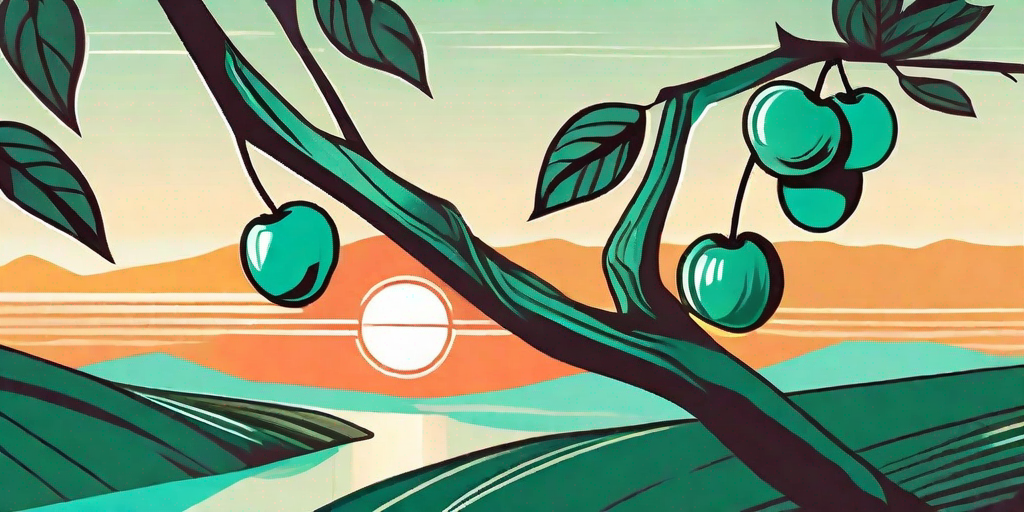
Plums, those juicy little orbs of delight, have been tantalizing taste buds for centuries. But when is the perfect time to pluck them from the tree? Well, dear reader, prepare to be enlightened. We're about to delve into the world of plum harvesting, and trust us, it's more exciting than it sounds.
Understanding the Plum Life Cycle
Before we can talk about harvesting, it's important to understand the plum life cycle. Yes, plums have a life cycle, and no, it's not just "grow, get eaten, repeat".
Plums start their life as beautiful blossoms on a tree. These blossoms eventually turn into small green fruits, which gradually grow and change color as they ripen. The color of a ripe plum can vary depending on the variety, from deep purple to red, yellow, or even green.
Once the plums are ripe, they're ready to be harvested. But how do you know when they're ripe? Well, that's where things get interesting.
Identifying Ripe Plums
Identifying ripe plums is a bit like playing detective. You need to look for clues and use your senses. The first clue is color. As mentioned earlier, plums change color as they ripen. However, this can be misleading, as some varieties stay green even when ripe. So, color alone isn't enough.
The next clue is texture. Ripe plums should be slightly soft to the touch, but not mushy. If you give the plum a gentle squeeze and it feels like a water balloon, it's overripe. If it's as hard as a rock, it's not ripe yet.
The final clue is smell. Ripe plums have a sweet, fruity aroma. If you can't smell anything, the plum probably isn't ripe yet. If it smells like vinegar, it's overripe and starting to ferment.
How to Harvest Plums
Now that we've covered how to identify ripe plums, let's talk about how to harvest them. Harvesting plums is a delicate process that requires a gentle touch.
First, select a ripe plum. Remember the clues we discussed earlier: color, texture, and smell. Once you've found a ripe plum, hold it gently in your hand and twist it slightly. If it's ripe, it should come off the tree easily.
It's important to handle plums gently to avoid bruising them. Bruised plums can spoil quickly, so be careful not to drop them or squeeze them too hard.
Tools for Harvesting
While you can certainly harvest plums by hand, there are tools that can make the process easier. A fruit picker, for example, is a handy tool that allows you to reach high branches without a ladder. It has a basket to catch the fruit and a blade to cut the stem.
Another useful tool is a fruit catching net. This is a large net that you spread under the tree to catch the fruit as it falls. It's especially useful if you have a large plum tree with lots of fruit.
Storing and Using Plums
Once you've harvested your plums, it's time to enjoy them. Plums can be eaten fresh, cooked into jams or pies, or even turned into wine. The possibilities are endless.
If you can't eat all your plums right away, you can store them in the refrigerator for a few days. For longer storage, you can freeze them or can them.
Freezing Plums
Freezing plums is a great way to preserve their flavor for later use. To freeze plums, first wash them and cut them in half to remove the pit. Then, place them on a baking sheet in a single layer and freeze them. Once they're frozen, you can transfer them to a freezer bag or container.
Canning Plums
Canning is another good option for long-term storage. To can plums, you'll need a canning kit, which includes jars, lids, and a canning pot. You'll also need a recipe for plum jam or preserves. There are many recipes available online, so you can choose one that suits your taste.
FAQs
When is plum season?
Plum season varies depending on the variety and location. In general, plums are in season from late spring to early fall.
Can I eat plums straight from the tree?
Yes, you can eat plums straight from the tree. However, they may be a bit tart. If you prefer sweeter plums, let them ripen a bit more after picking.
How do I know if a plum is overripe?
An overripe plum will be very soft and may have a fermented smell. It may also have brown spots or mold.
Conclusion
Harvesting plums at the perfect time can be a bit of a challenge, but with these tips, you'll be a plum-picking pro in no time. So, go forth and harvest those juicy orbs of delight. Your taste buds will thank you.











